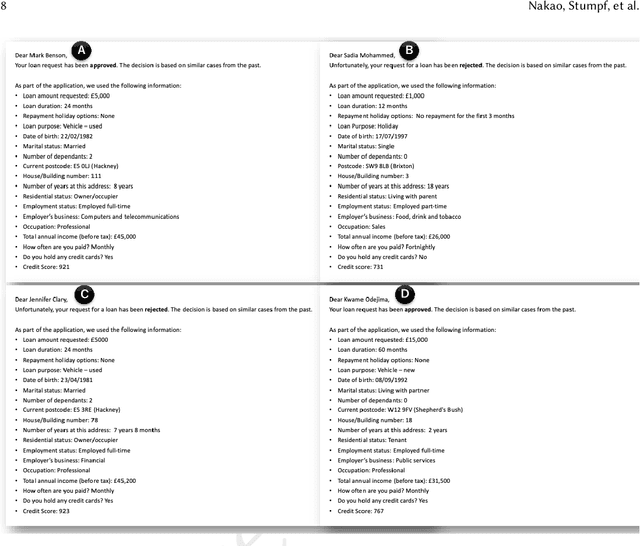Towards Involving End-users in Interactive Human-in-the-loop AI Fairness
Paper and Code
Apr 22, 2022



Ensuring fairness in artificial intelligence (AI) is important to counteract bias and discrimination in far-reaching applications. Recent work has started to investigate how humans judge fairness and how to support machine learning (ML) experts in making their AI models fairer. Drawing inspiration from an Explainable AI (XAI) approach called \emph{explanatory debugging} used in interactive machine learning, our work explores designing interpretable and interactive human-in-the-loop interfaces that allow ordinary end-users without any technical or domain background to identify potential fairness issues and possibly fix them in the context of loan decisions. Through workshops with end-users, we co-designed and implemented a prototype system that allowed end-users to see why predictions were made, and then to change weights on features to "debug" fairness issues. We evaluated the use of this prototype system through an online study. To investigate the implications of diverse human values about fairness around the globe, we also explored how cultural dimensions might play a role in using this prototype. Our results contribute to the design of interfaces to allow end-users to be involved in judging and addressing AI fairness through a human-in-the-loop approach.
 Add to Chrome
Add to Chrome Add to Firefox
Add to Firefox Add to Edge
Add to Edge